Matador Network's Blog, page 882
April 13, 2020
Narita airport cardboard beds

Traveling has nearly come to a grinding halt, but there are still flights heading into Tokyo’s Narita International Airport. However, all incoming travelers coming from at-risk areas must be tested for COVID-19 before being allowed to take public transportation, and since the results can take anywhere from six hours to two days, passengers who have nobody to pick them up at the airport are finding themselves stuck in limbo. To make the wait slightly more comfortable, the airport has built a makeshift hotel of cardboard beds with mattresses and quilts in the baggage claim area, for passengers who must stay overnight to await their test results.
The cardboard beds are intended to serve passengers who aren’t able to find suitable nearby accommodations. They were initially developed for use in evacuation centers during disasters. Now, they’re being repurposed for a different kind of crisis.
People have criticized the setup on social media, claiming the space poses a high risk for infections. CNN reported that safety precautions are being taken; staff are outfitted in protective gear, and provide snacks and water to passengers waiting on their results. 

More like this: The 7 most unexpected attractions in airports around the world
The post Japan airport sets up cardboard beds for incoming travelers awaiting COVID-19 test results appeared first on Matador Network.

Young climate activists like Greta

became a household name in 2018 after her solitary strike outside the Swedish parliament went viral. She’s since been showered with accolades and distinctions, being named the youngest Time Person of the Year in 2019 and receiving a Nobel Prize nomination the same year. Though Thunberg has succeeded Al Gore as this decade’s face of the climate crisis, she’s hardly alone in her environmental advocacy. And she’s not even an outlier given her age. Youth activists around the world, many inspired by Thunberg, have become some of the most vocal and dedicated defenders of the planet. Though they may not have the same name recognition, these seven are making waves in the world of environmentalism, and they may very well inspire you to make a few splashes of your own.
1. Helena Marschall
View this post on InstagramA post shared by Helena Marschall (@helena.marschall) on Dec 31, 2019 at 5:37am PST
Helena Marschall is among the leaders of the Fridays for Future movement in Germany. The 17-year-old has been organizing strikes since December 2018 after being inspired, like Villaseñor and many others, by Thunberg’s address at the United Nations’ Climate Change Conference, or COP24.
Marschall helped organize the first Fridays for Future strike in Frankfurt, which, she notes, only drew around 30 people. “It just kind of evolved from there,” she tells Matador Network. “We were more and more every week. And then suddenly, I organized a protest in March with only two other people, and there were like 8,000 standing there.” Marschall has since become more involved with organizing strikes on a national level, committing 30-40 hours a week to her activism on top of her school schedule.
“Activism in its essence is hope,” she says, noting that to seek change is to implicitly believe that change is possible. Outlining its hopes for the future, last year the Fridays for Future movement in Germany named six demands the group is working to see realized, including reaching net-zero carbon emissions and 100 percent renewable energy by 2035.
Marschall herself has become a role model for other aspiring activists around the world, and she encourages others to join the cause. “The climate movement is super wide,” she says. “We need everyone. We need artists, we need musicians, we need designers, we need organizers.” And even those unwilling or not ready to make considerable lifestyle changes can contribute to the cause, she adds. “Where we put our money, who we support, who we vote for can often have even bigger changes than what we eat or how we move through the world.”
2. Alexandria Villaseñor
View this post on InstagramA post shared by Earth Uprising (@earth_uprising) on Apr 22, 2019 at 8:44am PDT
At 14 years old, American activist Alexandria Villaseñor has established herself as a leading voice among young environmentalists. Born in Davis, California, she joined the Fridays for Future movement started by Thunberg in 2018 when she began protesting outside the United Nations headquarters in New York City, where her family relocated earlier that year. Villaseñor was motivated to support the cause after experiencing the effects of the deadly Camp Fire that originated in Northern California in November 2018, as well as hearing Thunberg’s speech at COP24 in Poland that December.
Beyond protesting weekly outside of the UN headquarters, Villaseñor launched a nonprofit organization of her own: Earth Uprising. The group seeks to encourage more young people to join the climate cause, identifying today’s youth as those who will experience some of the most devastating effects of climate change as well as those with the greatest opportunity to effect change. According to the website, “Earth Rising isn’t an organization. It’s a battle cry.”
Villaseñor also co-founded the US Youth Climate Strike. The student-led movement aims to see net-zero carbon emissions and 100 percent renewable energy by 2030, supports the Green New Deal and a Blue New Deal addressing marine environmental issues, and advocates for indigenous and social justice, as well as demanding environmental education in schools. With 15 other youth activists, Villaseñor notably filed a petition with the UN Committee on the Rights of the Child in September 2019, condemning five G20 member nations for failing to meet their Paris Agreement pledges to reduce carbon emissions and move away from fossil fuels.
3. Vanessa Nakate
View this post on InstagramA post shared by Vanessa Nakate (@vanessanakate1) on Apr 7, 2020 at 2:41pm PDT
Ugandan activist Vanessa Nakate is known internationally for her involvement in the Fridays for Future movement. Despite the coverage her climate strikes have received, however, the thrust of Nakate’s media attention came after the 23-year-old was cropped out of a photograph published by the Associated Press featuring fellow activists Greta Thunberg, Luisa Neubauer, Isabelle Axelsson, and Loukina Tille at the 2020 World Economic Forum in Davos, Switzerland.
In response, Nakate, the only black and African activist in the group, tweeted a comparison of the edited and unedited photographs, captioning the post, “You didn’t just erase a photo. You erased a continent. But I am stronger than ever.” She’s since become outspoken about the issue of representation in the world of climate activism, particularly given that Africa emits relatively little carbon yet feels some of the harshest effects of climate change. In another tweet, Nakate addressed the fact that, in 2019, the fires ravaging the Congo received disproportionately little coverage in comparison to the same year’s fires in California and the Amazon.
Beyond her involvement with the Fridays for Future movement, Nakate founded the Rise Up Movement and Youth for Future Africa group. She first garnered attention after striking outside the Ugandan parliament, taking cues from Thunberg’s parliamentary strike. Nakate has since been outspoken about the issue of rising temperatures in her home country, as well as spearheading projects like implementing solar energy in schools. She also hopes to inspire other African youths to join the climate cause and change the West-centric climate narrative.
4. Xiuhtezcatl Martinez
View this post on InstagramA post shared by Earth Guardians (@earthguardians) on Oct 14, 2019 at 6:19am PDT
Nineteen-year-old Xiuhtezcatl Martinez is the youth director of Earth Guardians, an environmental organization that teaches young activists how to become leaders in the climate movement. Promoting activism through the arts is a driving force behind the Earth Guardians mission, an approach Martinez himself advances as a hip-hop artist.
Of Aztec descent, Martinez describes his music as “raw and quick witted” and his lyrics as being “anchored by the Indigenous roots of his father’s lineage and the social justice work of his mother.” Martinez credits both of his parents with inspiring his activism. He’s spoken about being raised to honor traditional Mexican values, which highlight the connectivity of man and nature, and his mother is the founder and executive director of Earth Guardians.
Martinez’s resume is extensive. In addition to collaborating with artists like Bassnectar and Jaden Smith, as well as performing for hundreds of thousands at the Fridays for Future strike in 2019, he’s spoken at the UN and associated summits, given multiple TED talks on climate issues, and addressed students on college campuses across the county. Martinez has also earned a number of awards and accolades, including a 2013 US Volunteer Service Award designated by former US President Barack Obama and a spot on Rolling Stone’s 2017 25 Under 25 list of influential youth.
5. Helena Gualinga
View this post on InstagramA post shared by Sumak Helena Gualinga (@helenagualinga) on Jan 24, 2020 at 7:29am PST
Raised between Ecuador and Finland, 17-year-old Helena Gualinga was born into the indigenous Sarayaku community of the Amazon. She grew up protesting on behalf of the traditional Sarayaku territory, speaking out against the Ecuadorian government and big corporations that have long threatened the indigenous community’s land. Throughout her career, Gualinga has been outspoken about the environmental impact of oil extraction, as well as drawn attention to the fires, floods, deforestation, and other issues plaguing the Amazon.
In September 2019, Gualinga was photographed outside the UN headquarters in NYC holding a sign with a caption translating to “indigenous blood, not one more drop.” That December, she spoke on behalf of the Amazon at the UN COP25 climate summit in Madrid. The following month, in January 2020, Gualinga started a campaign called Polluters Out, which has brought together young activists around the world with a particular emphasis on rallying the youth in Latin America.
6. Lilly Platt
View this post on InstagramA post shared by Lilly’s Plastic Pickup (@lillys_plastic_pickup) on Jun 17, 2019 at 10:07pm PDT
Lilly Platt, the 11-year-old founder of Lilly’s Plastic Pickup, first became aware of the plastic pollution problem in 2015 while on a walk with her grandfather in the Netherlands. In just 10-15 minutes, the pair counted 91 pieces of plastic.
“And then my brain, it sort of awoke,” Platt tells Matador, “and then I was saying in my head, ‘I need to do something about this. I need to pick up more plastic.’” According to her, she was particularly motivated after learning from her grandfather that the majority of that plastic waste would wind up in the ocean.
Platt first began gaining recognition for her cleanup efforts after her mother posted a photo of the inordinate plastic pollution on Facebook. The online response prompted the Platts to continue documenting their cleanup efforts, and soon after, a local newspaper had sought out the young environmentalist for an interview. From there, a national newspaper followed, prompting further coverage from Dutch radio and television stations.
Today, Lilly’s Plastic Pickup has more than 7,000 followers on Instagram and Twitter. Platt’s commitment to environmentalism has also grown. In particular, she notes her interest in addressing climate change as a byproduct of seeing a video in 2018 of Thunberg speaking about the Paris Agreement. Platt also cites David Attenborough as a role model.
Now a role model in her own right, she encourages aspiring youth activists to start small. “Then, as you learn more…you can start with more larger things like organizing strikes and pickups,” she says, also noting that everyone can make changes to reduce their impact on the environment, such as carrying reusable bags, bottles, and straws, as well as favoring public transport. “No one is forcing you to become an activist,” she says, “but it’s always good to be informative and to know about most environmental problems.”
7. Xiye Bastida
View this post on InstagramA post shared by Xiye Bastida (@xiyebeara) on Dec 19, 2019 at 3:22pm PST
Xiye Bastida has been called “America’s Greta Thunberg,” though she was born in Mexico and has Chilean citizenship as well. Of Otomi-Toltec descent, Bastida moved with her family to NYC in 2015 after her hometown of San Pedro Tultepec flooded following years of drought.
Her interest in environmental activism began at her Manhattan high school, where she organized a strike in March 2019 that some 600 students joined. She has since organized countless strikes as a major player in the Fridays for Future movement in NYC and become an icon of the youth activist revolution. Today, Bastida serves on several environmental committees, including the Peoples Climate Movement, Sunrise Movement, and Extinction Rebellion.
In 2018, she spoke at the ninth UN Urban Forum, taking home the “Spirit of the UN” award. The following year, she was the subject of a Teen Vogue documentary called We Rise. Now 18, Bastida continues to strike on behalf of the planet and encourage other students and youth to do so, as well. You can follow her efforts on Twitter and Instagram. 

More like this: The 5 best environmental charities to make your money matter
The post 7 inspiring youth climate activists you should be following appeared first on Matador Network.

Cape Town drone footage of lockdown
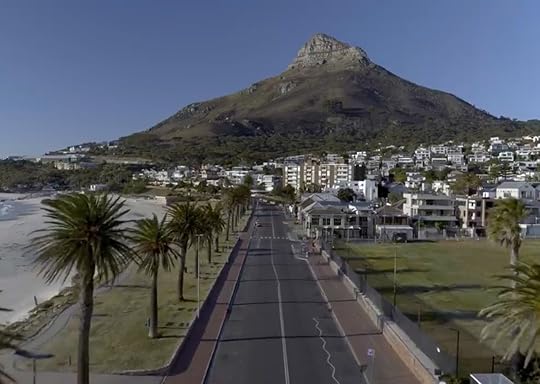
Amid the coronavirus lockdowns, the streets of some of busiest cities in the world have emptied and gone silent.
Recent drone footage captured by the Step Above drone company shows Cape Town, the legislative capital of South Africa and a city of more than 4.6 million inhabitants, eerily deserted and quiet. The city’s busiest streets, including its central business district, are now entirely empty.
Luke Bell, a Step Above drone pilot, said to Business Insider, “There’s a bit more traffic than people would think, but it’s super strange…it’s scary to see. But, at the same time, it’s cool because it means that people are listening to the law, staying home and we as a country are taking the lockdown seriously.”
While we might be inclined to view such footage as discouraging, it’s actually a positive sign that people are abiding by social distancing guidelines. And it’s not just Cape Town that’s embracing its quiet side. At the end of March, drone footage of San Francisco has shown similarly empty streets, vacant storefronts, and silent boardwalks. It might look like a scene from a disaster movie, but remember — the fewer people on the street, the quicker the curve will flatten, and the sooner this is all over. 

More like this: Italian mayors are losing it and yelling at people for ignoring lockdown rules
The post Drone footage of Cape Town, South Africa, shows an entirely empty city appeared first on Matador Network.

Georgia bar donates dollar bills

Money might not grow on trees, but at this Georgia bar, it certainly looks like it’s growing on the walls. The Sand Bar, on Georgia’s Tybee Island, was known for having dollar bills stapled to the walls by patrons. Many of the bills were decorated with messages from customers, or notes commemorating birthdays or anniversaries. Now, since the bar’s employees are indefinitely furloughed, the bar’s owner has decided to donate the money to staff.

Photo: Jennifer Knox/Facebook
Jennifer Knox, the bar’s owner, wrote on Facebook. “The Sand Bar is going to have a fresh new look, while giving back at the same time! We are taking down the dollar bills!! And donating all the money to our bartenders and musicians that need it! Figure, we got money (on the walls), and we got time!! So excited for this Labor of Love. And a good spring cleaning!! ”
Over a span of three days, a Tybee Island bar removed $3,714 worth of bills stapled to their walls to give to their unemployed staff.
April 10, 2020
Best health and wellness in Jordan

Whenever “wellness” and the “Middle East” are mentioned together, it’s almost always related to the salutary effects of the Dead Sea’s mineral-rich water. Aside from that, the region is usually perceived as hot, dusty, and harsh.
That impression is quite far from the truth. It’s easy to combine adventure and relaxation in this area of the world. Take Jordan — the country has a number of attractions that make it an ideal destination not just to engage in physical activity but also to recharge. From north to south, here are the best locations for pampering yourself after a full day of sightseeing, hiking, or swimming.
1. Umm Qais Rest House in Irbid
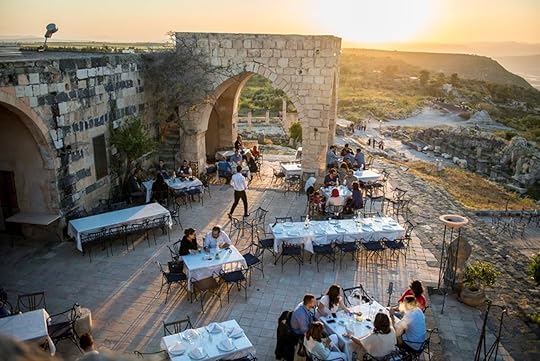
Photo: Umm Qais Rest House/Facebook
By virtue of its northerly location and the nourishing waters of the Yarmouk River and the Sea of Galilee (a bit of a misnomer as it’s actually a freshwater lake), much of Irbid is greener than the rest of the country. This part of Jordan is perhaps most famous for being home to the ruins of Umm Qais, one of the Roman Empire’s Decapolis cities.
Just after the entrance to Umm Qais, visitors will come upon the Rest House, which is a perfect place to relax after exploring the site’s temples, churches, cardo, amphitheater, and other archaeological sites. The Rest House includes a lovely Lebanese cafe with an unrivaled view of the Golan Heights and the Sea of Galilee, calm in the distance beyond the hills.
Ask for a seat on the tree-shaded stone patio. Pair a glass of local Jordanian wine with some light Mediterranean fare. Elevated well above Irbid’s downtown, far away from pollution and the cacophony of cars and construction, Umm Qais and its environs are permeated by tranquility. It’s an ideal spot to decompress after scampering about the ruins.
2. Ma’in Hot Springs in Madaba

Photo: Ma’in Hot Springs Resort & Spa
After a strenuous (but worthwhile) excursion through one of Madaba Governate’s stunning water canyons, your muscles and skin will likely need some attention. Luckily, Ma’in Hot Springs, located a short drive from most of these hikes, is a wonderful place to recuperate.
As you descend from the heights of barren mountains toward the hot springs, bright green pierces the rocky monotony below: lush palm trees, waterfalls, a small creek, several pools, and a series of adjacent stone buildings. In total, there are 16 natural springs gushing hot water into a series of pools in which locals and visitors soak and splash.
The water, which is known as “fossil groundwater,” is heated by underground lava fissures and saturated with potassium and magnesium, among other minerals. In conjunction with the high temperature of the water, these minerals promote skin health and alleviate muscle pain.
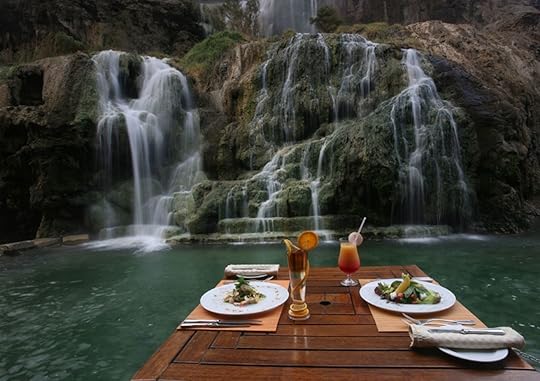
Photo: Ma’in Hot Springs Resort & Spa
For those who want to fully indulge in a more private setting, the Ma’in Hot Springs Resort & Spa is the perfect place to do so. Guests can recline in a secluded cove behind the hotel, enjoy some fresh juice or wine, and watch as a waterfall splashes into the pool below. Far from any city or town, it’s a relaxing retreat from the hustle and bustle of urban life, and a reinvigorating break for sore hikers.
3. The Dead Sea

Photo: Hrecheniuk Oleksii/Shutterstock
If you’ve made it to Ma’in Hot Springs, there’s no excuse to skip the 30-minute drive to the healing waters of the Dead Sea. A unique combination of salts and minerals make for a naturally occurring skin balm that even the world’s leading beauty brands cannot match. Allergies, eczema, acne, psoriasis — the water and mud of the Dead Sea can work wonders for a whole battery of skin maladies. Some people even claim that a good soak temporarily relieves symptoms of arthritis.
Since the Dead Sea is the lowest point on land, its water is warm for almost eight months of the year. Soak in it for 10-30 minutes to open up your pores, slather the rich mud on your skin, let it dry, and then rinse back off in the sea. You’ll emerge with silky skin and relaxed limbs. As long as you’re careful to avoid getting it in your eyes, it’s worth dipping your hair in the water and then rinsing it out at the shower stations on the beach. The seemingly miraculous elixir will make your locks feel softer and fuller.

Photo: Hilton Dead Sea Resort & Spa/Facebook
Numerous hotels dot the shoreline, but the Marriott and Hilton are by far the best options. The Marriott has spotless facilities and several excellent restaurants with international chefs, and the Hilton offers the perfect location from which to watch the sunset on the beach. Order a glass of arak (an anise-flavored drink popular in the region) or tea full of fresh mint leaves and observe the beautiful celestial spectacle.
4. Dana Village, Biosphere, and ecolodges
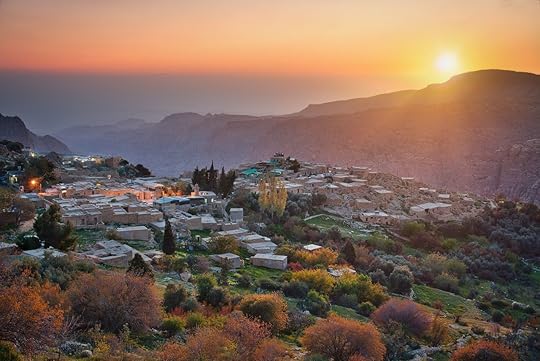
Photo: Luis Boucault/Shutterstock
Dana Village has it all: Unbeatable hiking, otherworldly landscapes, comfortable accommodations, and home-cooked food with the largest nature reserve in Jordan as the background.
Dana Biosphere Reserve is a treasure trove of fauna and flora, home to at least 894 plant, 190 bird, 37 mammal, and 36 reptile species. Natural springs combine with melted winter snow to form seasonal streams of water that infuse the rocky land with vegetation, including colorful flowers. The biosphere covers a section of the Jordan Rift Valley known as Wadi Dana, which is in turn part of the Great Rift Valley.
To reap all of the benefits that accompany being in such an unspoiled setting, plan a hike and a relaxing dinner. You’ll get in some good exercise, connect intimately with nature (maybe even catch a glimpse of the shy sand cat), and then have the chance to relax. A number of businesses have sprung up in the renovated Dana Village, which was constructed in the late 1800s on a hill above the wadi, abandoned for a larger settlement in the mid-late 1900s, and recently revived as a collection of lodges and restaurants.
Dana Tower Hotel and Dana Moon Hotel are two such ecolodges that offer both excellent access to hiking trails and spectacular vantage points from which to take in the valley below. Lounge on the Bedouin-style cushions on the roof with a cup of cardamom-ladened coffee and experience the ultimate post-hike relaxation.
5. Wadi Rum

Photo: Captain’s Desert Camp
Appreciation for Wadi Rum’s ochre expanses of sand and alien rock formations is no longer confined to locals. Its stark beauty has caught the eye of Hollywood, and scenes from a growing list of movies — including The Martian, Aladdin, and installments in the Star Wars saga — have been filmed there.
With the increasing attention has come an influx of tourists and a corresponding explosion of camping and guided tour options. It’s worth splurging a little on accommodation in Wadi Rum because you’ll want to unwind in comfort after a day of traversing the desert. Bubble rooms are quite popular at the moment, but if you’re looking for something a little roomier and more private, Captain’s Desert Camp is a great option. Spend the night in one of the large rooms (complete with a shower) modeled after a Bedouin tent, or opt for a cave room, which is built into the side of a massive rock protrusion and includes a skylight.

Photo: Captain’s Desert Camp
If you want to squeeze in some cardio before you relax, Wadi Rum is full of hiking and rock climbing opportunities. Just make sure that you are accompanied by a professional guide during forays into the rocky labyrinths. If less strenuous activities are more your speed, opt for a camel or Jeep tour — many camp hotels offer them. Either way, you’ll get a good dose of vitamin D under the cloudless skies.
Conclude the day by watching the blazing sun give way to a star-strewn cosmos while drinking Bedouin fire tea. Sweetened by cinnamon sticks, spiced with sage and cardamom, and earthy from the essence of campfire, it’s the perfect beverage to sip while unplugging and absorbing the natural beauty of a sky free from any trace of light pollution.
6. Berenice Beach in Aqaba

Photo: Luka Dakskobler/Shutterstock
Jordan’s small access point to the Red Sea is home to some of the world’s most accessible coral reefs and calm, warm water that is perfect for anyone seeking a beach vacation.
Aqaba is without question an essential stop on any tour of Jordan, but it’s worth doing right. Public beaches tend to be overcrowded and don’t offer easy access to the corals, but the private beaches attached to specific luxury hotels often charge an exorbitant amount for entry. Avoid both and opt instead for Berenice Beach, the ideal spot for Jacques Cousteaus and beach bums alike.
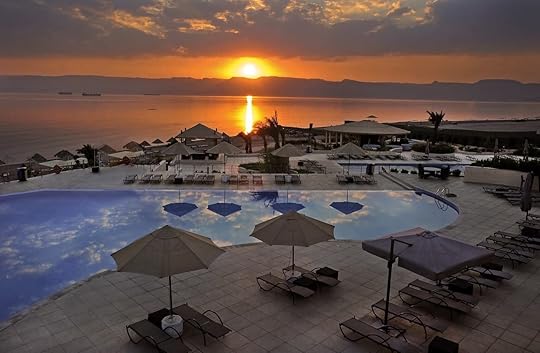
Photo: Berenice Beach Club/Facebook
For a reasonable entrance fee, you can use the beach all day. The sand is pristine, the water is teeming with fish flitting in and out of colorful coral, and the premises are well-kept. You can rent scuba or snorkeling gear and hire an instructor on site. Once you’ve had your fill of underwater fun and have worked up an appetite, recline on the comfortable chairs to refuel and rehydrate with your choice of food and an array of freshly squeezed juices. 

More like this: The best things to do in Jordan beyond Petra
The post A wellness guide to the hot springs, beaches, and retreats of Jordan appeared first on Matador Network.

Reasons to host exchange students

As national borders slammed shut in recent weeks, stories of exchange students caught far from home seized our attention. The idea of teenagers scrambling to get to their home countries during a global pandemic is certainly gripping — but it misses the real story that needs to be told.
“What I’ve seen in the press is… all these Americans stranded abroad. To be honest, that was not really our challenge. We got the vast majority of our Americans home,” said Tara Hofmann, President and Chief Executive Officer at AFS-USA, one of the country’s most prestigious exchange programs.
A bigger challenge, said Hofmann, was “…getting the 1,700 kids across the US onto their domestic connections.” With buses not running, businesses shuttering, and flight cancellations, Hofmann said volunteers drove students hundreds of miles and AFS chartered planes to fly them home. At the start of April, Hofmann said the organization was still working on returning about 400 kids to their countries of origin.
The real disappointment

Photo: International Student Exchange
Yet while the task of rapidly repatriating young people in such conditions remains a daunting task, it’s not the most poignant element of this drama.
Rather, the unfortunate part is that students have had to suddenly leave their exchange experiences in the first place. Hofmann said that “Some of these kids have had their heart set on going for two years, they’ve been organizing their classes so they can go abroad, and raised money for their scholarships,” since AFS provides financial support for some students.
“You can imagine the emotions the students are going through, now going home,” said Hofmann. “For the kids who have been here since August, they were going home at the end of June/July, they were kind of gearing up. For the kids who only arrived in January, it’s really heart wrenching.” Hofmann added that AFS was working to see if they’ll be able to offer alternatives to age-eligible kids who were only able to stay a few weeks into their program.
Distress about leaving was a story we heard from both host parents and the students themselves, eclipsing tales of kids who wanted to return home right away. It speaks to the deep value of the exchange student experience and the fact that these programs need to continue.
In March, 16-year-old David Thuss was well into his nine-month program in the UK when he was told by the exchange organization that he had less than a week to pack up and leave — more than three months early.
“I was very disappointed,” said Thuss, adding that he even considered asking his host mother if he could stay on independent of the exchange program. But seeing that his fellow international students were departing and classes were going online, Thuss realized he’d be better off sheltering in place with his natural family in Germany.
In San Francisco, host father Jeffrey White and his wife had two exchange students who’d arrived from Italy and Vietnam last August through the International Student Exchange (ISE) organization. White said that when ISE brought up the possibility of the students leaving, the young men were not in favor.
“In the beginning, both of them were pretty adamant they did not want to go home. They wanted to stay here,” said White. However, White talked it over with his wife, and given the reality of staying in California under lockdown with schools closed, he said, “We basically decided that the kids were better off with their families.” (While the Italian student was able to leave rather quickly, the one from Vietnam was still in San Francisco this week.)
Personal bonds and personal growth

Photo: AFS-USA
Much of the sadness comes from abruptly ending deepening relationships with new friends, as well as host parents and siblings. As someone who, together with my family, has hosted several exchange students, I can attest to the strength of these bonds. Three years ago, when our German student spoke at an AFS farewell event, he broke down. Before an audience of students and host families, the magnitude of his experience hit him — and the tears that the stoic athlete had kept in until then flowed freely.
Beyond the attachments they forge, exchange students experience intense personal growth during their time abroad. White, who has hosted one or two students annually for the last eight years, said, “They’ll learn different skills, they’ll get out of their comfort zone… They definitely have more confidence once they leave.”
It’s not an exaggeration to say that students, and host families, find the exchange experience transformative.
“While people describe many benefits they experienced by hosting a student or becoming an exchange student, one phrase we hear most often is, ‘AFS changed my life,’” said Marlene Baker, who heads up corporate communications for AFS USA.
A more peaceful world

Photo: AFS-USA
For all the benefits of these bonds and growth, we should also remember why the programs were first developed. AFS, for one, was created in 1947 after years of international upheaval. Its founders were “volunteer WWI and WWII American Field Service ambulance drivers — who emerged from the wars with a bold mission: to help prevent future conflict through cultural exchange and understanding,” said Baker.
Those ambulance drivers felt that exchange programs could show young people the common bonds that we all share. And they were right.
“When you grow up in one town you have this local perspective, but then you expand and you notice that people are all the same everywhere,” said Thuss of the nearly seven months he spent in Wales. He said he would tell any fellow student that they should go abroad, even if they couldn’t stay for the program’s intended duration: “Even if it’s shorter, it’s still an experience that’s worth it. Your whole view of the world expands.”
We will need more of that mind opening in the post-pandemic world. While scientists and other organizations work together to address this virus, some politicians are regrettably blaming other countries and sowing a fear of foreigners as harbingers of disease. We need to combat that xenophobia, and exchange programs can help us — since they broaden the outlook not just of students but of the people who host them.
Amanda Corey, marketing manager for International Student Exchange (ISE), the program White’s students were on, put it this way: “This is another one of those pinnacle moments… We really believe that these international exchanges offer a glimpse into one another’s lives, and after the period of isolation and quarantine, where we’re forcibly removed from one another, I think the importance of that is going to bubble to the surface more than it ever has.”
Will it be possible next year?

Photo: AFS-USA
While we may need exchange programs even more as we emerge from this global calamity, the question is how soon it can happen. Beyond the specter of schools remaining closed next fall, many are shut now, meaning administrators can’t fill in the paperwork needed for students to get visas. Moreover, State Department compliance regulations currently require in-person interviews with potential host families.
One thing is certain. Host families and students still want the experience, and both AFS and ISE said they’ve seen very few cancellations. “We have seen a lot more positive reactions and attitudes than even we expected. We’re seeing people signing up to host,” said ISE’s Chief Operations Officer Milos Prokic. “We’re dealing with people that are so loving and so ready to open their homes to strangers from far away.”
In Barcelona, 15-year-old Sarah Vallès Wang still hopes to begin her exchange year in the US in a few months: “The desire I have to go is the same, or even more.” Vallès said she knows her “… experience is going to be different since this current situation will change things, but I know it will be worth it.”
For his part, White and his wife are already committed to hosting students from Belgium and Italy again in August. White says he feels that host families “get more out of it than they give,” adding, “Also you’re just giving back to the world, in a way, by doing it.” 

More like this: How people are coping with being far from family when borders are closed
The post Why we’ll need exchange student hosts more than ever next year appeared first on Matador Network.

Ugandan leader workout video

Worldwide lockdown have spawned an assortment of at-home fitness experts and yoga enthusiasts. Now adding his name to the long list of online fitness trainers is 75-year-old Yoweri Museveni, the president of Uganda.
In a video released on Thursday, dressed more like a boxer-in-training than a head of state, Museveni jogged laps around his office in a gray Nike tracksuit, before banging out a few push-ups.
Now this is what am talking about
What to do on Papeete, Tahiti

Compared to its sister isles, Tahiti gets no respect. But there are plenty of reasons to give the main island a closer look.
With neither a grass skirt nor a fragrant frangipani lei to welcome them, most foreigners arrive in French Polynesia via Papeete to find a bland international airport. Sure, there may be a desultory ukulele trio in some far corner of the terminal, but it’s still an unfortunate introduction to the French dependency. Papeete is greatly lacking in tropical charm, despite the fact that it’s a capital city in the South Pacific. That’s why most travelers tend to spend just one night there, usually as a convenience on arrival or the night before departure, rarely going beyond the urban center.
But for those with a sense of adventure and the keys to a rental car (easily booked in advance at the airport or in town), the main island of Tahiti has plenty of alluring sights. And most of them can be seen in a single afternoon.
A traditional Tahitian table for a get-started lunch
No one would be surprised to learn that Tahiti is famed for its seafood and its unpretentious preparation of the ocean’s bounty. And if a meal like that can be enjoyed within a coconut’s throw of the surf, all the better.
The Tahiti Pearl Beach Resort is just 15 minutes from downtown Papeete on a clockwise drive around the island, but it feels like another planet. The resort is Tahitian to the core with its massive, palm-thatch-roofed, open-walled restaurant; lush gardens; vast swimming pool; and waves crashing on the beach. In fact, it would be out of place almost anywhere else.
The poisson cru a la tahitienne — a traditional raw fish salad with juicy chunks of tuna in a bracing sauce of onion, tomato, cucumber, lime juice, and coconut milk — sounds ideal when I read the menu, and proves to be when served. The setting is idyllic: booming waves washing up onto a volcanic black sand beach, soft Polynesian music floating down from hidden speakers, and the mountainous silhouette of Moorea (where another local food adventure awaits) rising just across the channel.
Casting a somewhat macabre tone to the otherwise ethereal setting are the overgrown ruins of what was once the Hyatt Regency Tahiti resort atop a nearby hill. Shuttered for more than two decades, the resort’s abandonment is still a source of dispute among the locals. (Was it a tax lien? Partner dispute? Something more sinister?) The creaky remnants of the resort loom over the bay, awaiting a Polynesian version of Stephen King to give them life again, if only in literary form.
Captain Cook and the Transit of Venus

Photo: Mark Orwoll
Not far from Tahiti Pearl Beach Resort is a popular park brimming with people, palms, and portraits of the past. At its heart is a 100-foot-tall lighthouse constructed in 1867 by the father of author Robert Louis Stevenson. Some 20 years later, Stevenson, who had served as his father’s aide, returned to Tahiti and recalled his pride in the family accomplishment: “Great were the feelings of emotion as I stood with mother by my side and we looked upon the edifice designed by my father when I was 16 and worked in his office the summer of 1866.”
There is an excellent anchorage just off the peninsula where Captain James Cook moored his ship, the HMS Endeavour, to monitor the 1769 Transit of Venus, thus giving the spit of land its name, Point Venus. Another famous ship that found safe harbor here, in 1788, was the HMS Bounty, just before the mutiny led by Fletcher Christian. The Bounty dropped anchor offshore to collect breadfruit saplings for transfer to the Caribbean, where it was hoped they would provide low-cost sustenance for the slave population. Tahiti’s first Christian missionaries arrived here in 1797. Point Venus, it turns out, was a veritable Grand Central Terminal of the 18th-century maritime world.
Today, the park is a charming spot for a stroll, to watch dogs play in the surf, and to have a close-up look at some of the traditional and racing outrigger canoes stored on the beach. There’s also a very good crafts shop with Tahitian textiles and rosewood carvings.
The Arahoho Blowhole
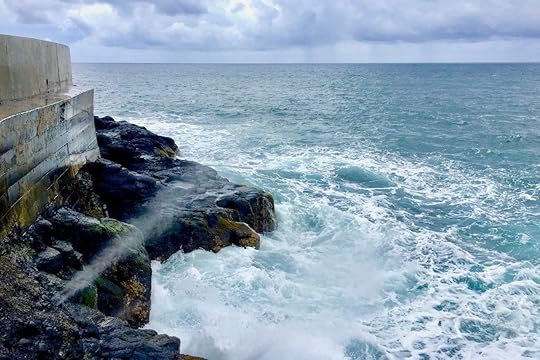
Photo: Mark Orwoll
Continuing our circumnavigation in a clockwise direction, we arrive at a curiosity called the Arahoho Blowhole, where waves pouring into ancient lava tubes force air and moisture up and out the tubes’ perforated ceiling like whale spouts. One of the blowholes erupts every minute or so with a loud whoosh followed by a plume of what looks like steam. A separate but connected blowhole shoots its seaspray horizontally, like cannon fire, as waves wash hundreds of tadpole-like gobies onto the rocks. The gobies are little fish that use their pectoral fins like legs to move across the rocks. They can remain on the surface for several minutes thanks to cutaneous respiration — meaning they breathe through their skin. Finally, exhausted and running out of oxygen, the gobies drop back into the churning foam below.
Young couples stare at the blowhole spray in amusement, then walk along the coastal path, lined with Polynesian rosewood and Island walnut. Visitors observe the surfers below, shouting approval when one catches a wave and moaning disappointment when a good wave is missed. Across a narrow bay, waves rush up onto a shelf of volcanic rocks, and the white foam trickles back down the rocky shore like scores of small, lazy rivers emptying inexorably into the sea. The entire scene is, in a word, mesmerizing.
The three waterfalls
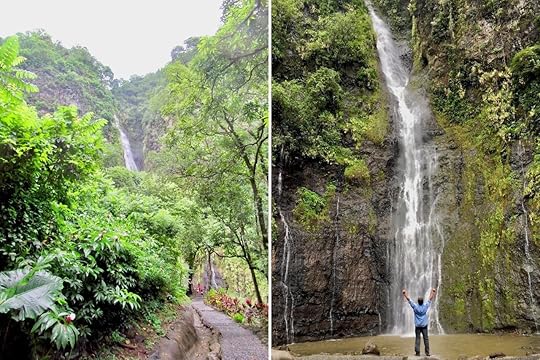
Photo: Mark Orwoll
Faarumai Valley cuts deep into the coastal mountains but is so narrow in spots it barely contains a two-lane blacktop and a few modest houses on either side. During a hike, my group followed the mile-long road into the green canyon spilling over with aromatic ferns, bamboo, and the Tahitian chestnut called mape (pronounced MAH-pay), whose nut is a popular boiled snack. The road ends in a parking lot where we catch a glimpse of the uppermost reaches of 300-foot-tall Vaimahuta Falls. At some points along its rushing spill, the falls tumble straight and furious; at others, the water fans out in the wind, appearing like a white veil.
We cross a footbridge to a gravel trail that slopes gently uphill for a hundred yards to the base of Vaimahuta. A large catch basin is continually replenished by the falling water, which then flows into a peaceful stream. But look up! The view to the top of the waterfall is steep enough to cause some people to lose their balance and make everyone else desperate to fit the entire waterfall into the screen of their iPhone as they take a picture.
Two other falls — Haamarere Iti and Haamarere Rahi — can be reached by a trail that goes even deeper into the canyon, but the path was closed for repairs in early 2020.
The old way of life in “Little” Tahiti
Tahiti is actually comprised of two conjoined islands. The larger, Tahiti Nui, and the very small Tahiti Iti (iti means “little”).
“Whenever I come to Tahiti Iti, it reminds me that life doesn’t change here,” says Marania Teuru, a local woman who is guiding me around. “It’s still like it was when I was a girl.”
Women in sarongs and bathing suit tops chat easily on front porches. I see two elderly men and one woman in plastic chairs at the edge of the coastal road, intently watching the light traffic pass by. Women here still place a hibiscus flower behind their ears. Dirt roads run inland into dark valleys. The houses are tidy, with neat lawns and bright flower beds. Coconut palms, bamboo, banana plants, and blooms of every color fill the yards. Husbands and wives sit beside their homemade fruit stands at the edge of their driveways to sell the produce from backyard gardens.

Photo: Tahiti Tourism/Steve Dickinson
The coast road comes to an end at Teahupoo, a famous surf site and future host to the 2024 Summer Olympics surfing competition. The beach is small, and one wonders where the crowds will sit and watch. There are few places to eat nearby, just some rudimentary cafés known as snacks on the island. A few homely guesthouses accept a handful of visitors, but there’s nothing here on an Olympic scale. Except, that is, for the giant rollers out beyond the reef and nearly out of view of the beach. The giant waves come in so fast that often the only way any surfer can catch one is to be towed by a jet ski, then maneuver on his own once he is locked in the curl.
The grottoes of Maraa

Photo: Mark Orwoll
My last stop before returning to Papeete is the grottoes of Maraa, a series of water-filled caverns lying at the base of sheer basalt cliffs. The first cave is enormous. Although it isn’t raining while I’m there, huge water drops plop down from the cave ceiling. Forests of ferns hang upside down from cliff faces. A footpath near the highway leads to more grottoes, cascades, waterfalls, ferns, palms, bamboo, and shrieking birds.
It is, in other words, exactly what you want to experience when you come to the South Seas. And with a bit of effort, this is what you’ll find when you come to the “unloved” island of Tahiti. 

More like this: Chow mein sandwiches, mustard wontons, and fruit: a tour of French Polynesian street food
The post On Tahiti’s main island, history, culture, and nature shine appeared first on Matador Network.

Mashpee Wampanoag land revoked

The Trump administration has revoked the reservation status of land inhabited by a Native American tribe in Massachusetts for over 12,000 years. In March, the US Department of the Interior ordered that 321 acres of land inhabited by the Mashpee Wampanoag tribe be removed from the federal trust and the reservation disestablished. This deprived the tribe of their independent judicial system, police force, and local school, and stripped the tribe of their governance over the land where they had been living for over 12,000 years.
In response, 18 members of the House of Representatives sent a letter to Senate Majority Leader Mitch McConnell and Minority Leader Charles Schumer asking to reinstate the tribe’s land federal status.
Mashpee Wampanoag Chairman Cedric Cromwell took particular issue with the timing of the action. “The steps being taken right now — in the middle of a nationwide pandemic — to disestablish our reservation and take our land out of trust has created a crisis on top of a crisis. Our land is sacred. It’s where our people receive health services. It’s where our children attend our language immersion school. It’s where we are building houses for our citizens. Taking our land is a direct attack on our culture and our way of living.” 

More like this: 11 important Native American heritage sites in the US that you need to visit
The post Trump administration revokes reservation status of land inhabited by Native American tribe for 12,000 years appeared first on Matador Network.

Rolls-Royce car design contest

Around the world, a lot of parents have all of a sudden found themselves with a new job: school teacher. And while none of them really signed up for that role, necessarily, well, nobody signed up for a lot of what’s going on right now. But if you’re looking for creative ways to fill the arts and crafts portion of the day’s lesson, an unexpected source is here to help.
Rolls-Royce, the British automaker best known for making cars only the rich and famous can afford, is inviting kids to let their imaginations run wild and design the luxury car of the future. Through its new Young Designer Competition, Rolls-Royce will be accepting drawings from children all over the world, sharing what their dream car will look like.

Photo: Thomas/Rolls-Royce
A car powered only by your family dog and a box of Froot Loops? Absolutely. A flying car that also breathes fire, like a dragon with personal TV screens? Send it in. A car with a sound-proof partition so your parents can’t threaten to turn the car around and go home when your sister pokes her finger across the imaginary line through the back seat? Pretty sure Rolls-Royce already has that, but feel free to make that line unimaginary and make it out of gold leaf.
Anything goes in this contest, a public extension of an annual competition Rolls-Royce holds at its Employees’ Family Day. The winner will get a professional rendering of their dream car. Not to imply your child’s drawing skills aren’t already reminiscent of a young M.C. Escher, but the folks at Rolls-Royce are pretty good too. If you happen to live in the United Kingdom, your child could also be eligible to win a ride to school in a Phantom for them and their best friend. Or whoever they decide is their best friend that day. Spoiler alert: It probably won’t be you, but it will give you a few extra minutes of peace and quiet once the kids are finally back in school.
You can enter your kids’ designs here, and entries must be received by May 18. So bust out the art supplies and get the creative juices flowing. While the hope for home schooling is that someday your child can afford a Rolls-Royce of their own, at least today you can get them dreaming. And maybe even getting a taste of that life for one glorious back-to-school ride. 

More like this: What to do when your active kids are stuck inside
The post Rolls-Royce is inviting kids to design the luxury car of the future appeared first on Matador Network.

Matador Network's Blog
- Matador Network's profile
- 6 followers



